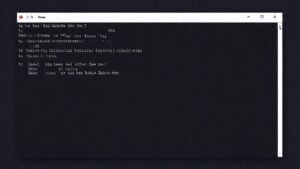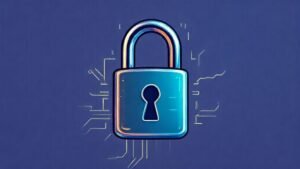Identity Theft Protection Guide: Essential Tactics for Safeguarding Your Finances
- THE MAG POST

- Sep 8
- 5 min read

Identity theft protection guide begins with a clear-eyed view of risk and a practical blueprint for action. In two concise passages, this piece invites readers to move from fear to method, embracing habits, tools, and institutional support that together create a robust shield against fraud.
A well-crafted defense balances personal discipline, smart technology, and timely reporting. By treating data as a valuable asset and every transaction as an opportunity to verify legitimacy, you build resilience that pays dividends long after the immediate threat has passed.
Guarding your financial front door requires more than vigilance; it demands a structured, multi-layered approach that turns risk into a manageable process. This identity theft protection guide reframes threat awareness as actionable practice, combining tech, policy, and everyday hygiene to minimize losses and shorten recovery times.
Guarding Your Financial Front Door
Identity theft is a complex, evolving challenge that exploits gaps across digital and physical domains. Understanding how thieves operate—from data breaches to synthetic identities—helps you anticipate moves and shore up weak points before damage accrues. A disciplined, layered strategy can shift the balance of power in your favor.
Understanding the Anatomy of Identity Theft
Identity theft occurs when someone uses your personal data—name, Social Security number, credit card details—without permission to commit fraud or other crimes. Modern thieves blend stolen data with realistic details, creating a mosaic that is hard to disentangle. The earliest signals are often mundane: small charges, unfamiliar inquiries, or slightly altered contact details.
Common outcomes include new credit accounts, drained bank balances, or refunds routed to counterfeit channels. In some cases, fraudsters exploit medical billing or government benefits using stolen identifiers. Because attackers frequently operate across multiple channels, assembling a complete picture requires cross-checking bank alerts, credit reports, and mail streams for anomalies.
Practical Defenses: From Password Hygiene to Data Stewardship
Defenses start with credentials. Unique, lengthy passwords for every service, complemented by two‑factor authentication, create meaningful friction for would‑be intruders. Treat sensitive documents as valuables: shred old statements, minimize the data you carry, and store critical records in a secure location rather than wallets or bags that travel with you.
Data stewardship means reducing exposure: limit sharing on social platforms, monitor for unusual account activity, and enroll in credit monitoring or alerts that flag atypical transactions. Combine these with routine checks of bank statements and credit reports. While no system is perfect, layered defenses dramatically raise the cost and effort required for attackers.
Spotting Red Flags: Early Warning Signals That Something Is Wrong
Even the best protections cannot eliminate risk entirely. The key is recognizing early signals that something is off and acting swiftly to contain any potential breach. The moment you notice a discrepancy, a deliberate, calm process can prevent a small issue from becoming a full-blown crisis.
Account Activity Signals
Unfamiliar charges, payments you did not authorize, or sudden withdrawals deserve immediate scrutiny. A new loan inquiry or credit line appearing on your report without your initiation is a classic red flag. Regularly reviewing statements and leveraging real‑time alerts helps you detect these events sooner rather than later.
Another warning sign is sudden changes in how you’re contacted or how your information is used. If you begin receiving bills for services you never used, or if government or employer portals show unexpected access requests, treat these as potential indicators of compromised data and investigate promptly.
Mail, Messages, and Contact Anomalies
Identity thieves often manipulate mail and digital communication channels. Redirected statements, unfamiliar tax documents, or surprise official notices can signal address changes or account takeovers. Phishing emails or text messages that request sensitive details are common entry points; never respond with personal data through these channels.
Maintaining a stable line of contact with your financial institutions helps you spot anomalies early. If you notice disruption in mail flow or receive notices for accounts you did not open, contact relevant providers immediately and request a formal review of your records.
Fast Response Playbook: Steps to Contain Damage and Reclaim Your Identity
When a breach is suspected, speed matters. A clear playbook minimizes damage, preserves evidence, and accelerates recovery. The following steps provide a practical framework you can follow under pressure.
Immediate Actions You Take Now
First, freeze your credit with the major bureaus to prevent new accounts from being opened in your name. If a freeze feels overly punitive for the moment, at least place a temporary lift on a specific lender or service so you can evaluate whether a new application is legitimate. Update passwords and enable two‑factor authentication everywhere possible.
Next, contact your banks and card issuers to report suspected fraud, dispute unauthorized charges, and request account protections or new cards as needed. Keep records of all communications and confirmations. File an FTC Identity Theft report to create an official recovery plan and a credible trail for investigators.
Coordinating with Banks, Credit Bureaus, and Law Enforcement
Inform each financial institution of the suspected breach and request written confirmations of actions taken. If a new account was opened, place a fraud alert and pursue a formal account review. Check that all affected accounts have correct contact information and that no unauthorized beneficiaries or auto-pay setups exist.
For law enforcement and regulatory cooperation, file a police report where applicable and use IdentityTheft.gov to assemble a personalized recovery plan. The collaboration between you, financial institutions, and regulators often determines the speed and completeness of the resolution.
Beyond Basics: Building a Resilient Identity Security Strategy
Resilience extends beyond responding to incidents; it requires ongoing investment in monitoring, education, and process refinement. A forward-looking framework reduces both the likelihood of incidents and the time to recover when they occur.
Long-Term Monitoring Toolkit
Commit to continuous monitoring: periodic credit reports, alerts for new accounts or high-risk activity, and automated notifications for unusual transactions. Employ a reputable identity protection service that aggregates risk signals from various data sources and converts them into actionable guidance customized to your profile.
Incorporate device and network hygiene into your routine. Regular software updates, endpoint protection, and secure Wi-Fi practices close gaps that attackers frequently exploit. A proactive stance keeps your digital environment aligned with evolving threat landscapes.
Education, Policy, and Community Resilience
Educate household members about data hygiene, phishing recognition, and safe sharing practices. Establish household policies for handling sensitive documents, printing and discarding data, and reporting suspicious activity. Participation in community or workplace training expands the network of people who can detect and thwart fraud.
Advocate for transparent data practices within your networks and demand responses that respect privacy while offering practical security controls. A culture of security awareness at home, work, and in public life compounds the effectiveness of technical protections.
Key Takeaways
Identity theft is a persistent risk, but a disciplined, multi-layered approach can dramatically reduce exposure and shorten recovery timelines. By understanding theft mechanics, implementing strong credentials, and maintaining vigilant monitoring and rapid response protocols, you can safeguard your financial life and restore confidence after an incident.
Section | Focus |
Guarding Your Financial Front Door (identity theft protection guide) | Overview of mechanics and layered defenses |
Spotting Red Flags | Early warning signs and risk signals |
Fast Response Playbook | Immediate actions and institutional coordination |
Beyond Basics | Long-term resilience with monitoring and education |
From our network :
Trump Administration Data Purge: CDC Website Scrubbed of LGBTQ+ Health Information
What is POSIX? A Detailed Explanation of the POSIX Standard
Best BBC Sounds Podcasts: From Freddie Scappaticci to Optimism and More
Why Are There Equal Numbers of Boys and Girls? Unraveling the Mystery of Human Sex Ratio






















































Comments